In resonance with the age-old adage, first impressions play a good part in setting the tone for the rest of a journey, marking an auspicious start of something. This also applies to the start of an employee’s journey. In this article, you will learn about employee onboarding examples and best practices from tech companies.
Employees’ onboarding is essential because it prepares the new hires for their new jobs in a new company, and when well done, will ensure that the new employees can acclimate and understand the full scope of their new position and role, as well as familiarize themselves with the company’s culture and philosophies.
A well thought of, well-planned, and expertly executed onboarding journey may engage newly hired employees by guaranteeing that they will feel welcome and part of the team and may warrant their stay in the company.
The goal of this exercise is to affirm in their minds that they made the correct decision of choosing and joining a company and that what they have to offer will contribute to the company’s and their own growth.
When employees feel fully immersed in a company’s culture and inculcated to its vision, mission and core values, they would be encouraged to be active members of the workforce, as opposed to uninspired employees who will just trudge through their workdays dialing it in.
Having established how essential a good employee onboarding process is, it begs the question on how one measures how successful and effective a company is in welcoming its new hires.
Below are some success stories from notable companies to provide some insight on what they did well, and how they are continuing on improving and doing things right.
Zapier
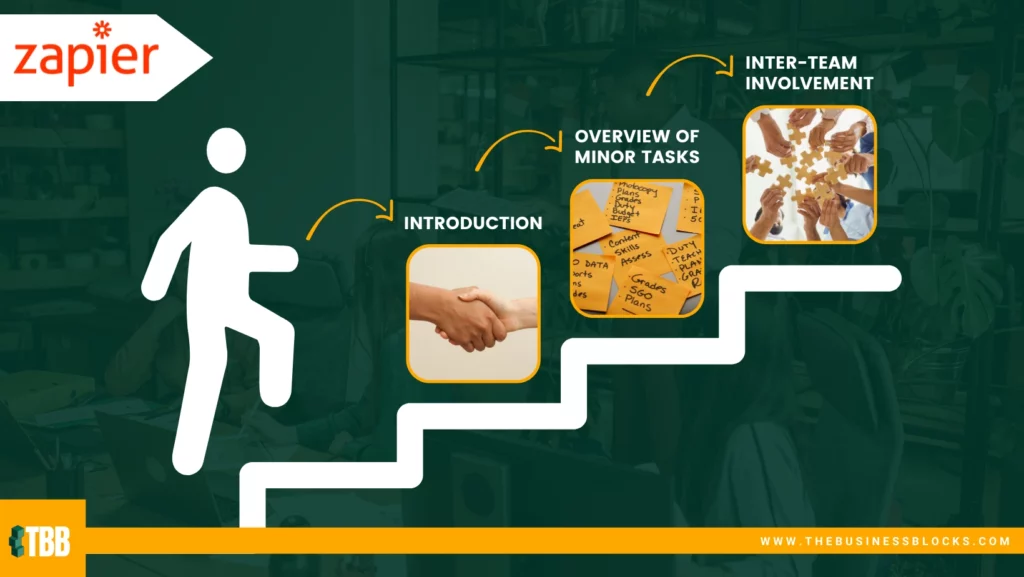
Zapier is a well-known fully remote company in the internet and web services domain that was founded in 2011. It’s headquarters is in San Francisco, California and the current employee headcount is at around 350 to 600 employees across 39 countries.
Zapier, well known for a product that champions automation, aptly promotes remote work, not just for their clients that benefit from its product’s automated workflows, but for its own workforce as well.
This SaaS company’s proclivity, through its product, is to nurture and advance task automation with the goal of aiding users achieve productivity with less or minimal effort thus empowering individuals, entrepreneurs and companies with more than 5,000 available integrations with applications such as Google Suite, Dropbox and more.
Zapier has a track record of maintaining a culture and workforce comprised of empathetic, smart, cool and fun individuals; this, coupled by a clear hiring plan makes the company a leader in envisioning and implementing innovative ways in running a business and managing the workplace environment.
Having a clear-cut product-driven roadmap may possibly help steer the operations and processes of the company, including employee onboarding.
Given the size of the company and the model of workplace arrangement that they employ, high engagement from employees and an effective onboarding process is essential, and the ethos in achieving this may also be inspired by the company’s goals, mission and the principles that drive its incredible product.
What is notable with Zapier’s success in employee onboarding is the company’s penchant for a natural progression and clearly-defined task milestones.
To ensure that new employees can be onboarded properly and validly, there should be a balance between slowly acclimating them to the new role and tasks while keeping them involved, engaged and challenged, and this is what Zapier tries to achieve byimplementing a structured and paced onboarding schedule.
The first part of the process, conducted during the first week of employment, aims to let the new hires become familiar with the company, the team to which they are assigned, the role under which they belong to and the corresponding responsibilities that come with the position.
This also entails setting up the tools, systems and applications that are needed in order for the new employees to fulfill their day-to-day tasks and become effective and productive contributors to the team.
By doing this, the employees are being prepared and oriented in the functions that they need to fulfill and the expectations that the team and company has for them, allowing them to start their journey in the new company with the right mindset and a clear path for them to achieve the goal for themselves and for the company.
The second part of the onboarding process calls for the involvement of the employees in small tasks related to their field or domain. For new hires in technical positions, this may involve minor tasks such as performing code reviews, making small development items or technical changes etc., giving the employees an overview of what a normal day in the job would be like.
In doing so, new job anxiety that may bother the employees that are being onboarded may be dissipated making it easy for them to imagine and prepare themselves for the usual tasks that may be assigned to them and the situations that they may find themselves in.
Finally, the last part of the onboarding process will involve accomplishing tasks with colleagues from other teams for cross-functional projects fostering a collaborative environment.
With this approach, Zapier’s new employees are provided just enough freedom and the right amount of time to become familiar with all aspects of their new jobs, providing a conducive environment for them to settle into their new roles.
The structured process prepares everyone, from the employees, to their team leads and colleagues to the management in aligning expectations and managing tasks and schedules effectively.
Buffer
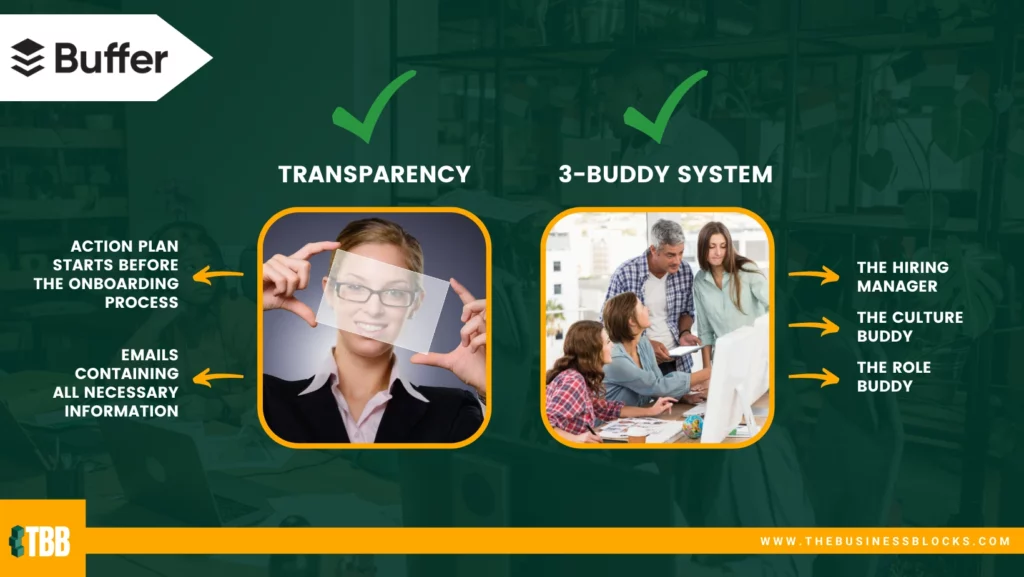
Buffer is a mid-sized tech company that specializes in helping organizations and small businesses build and grow their audience through social media and marketing campaigns.
It offers services such as creation of landing pages, company website links, analysis of social media performance and reach insights, assistance in engaging with followers and potential leads and planning and publishing of content for platforms and channels such as Facebook, Instagram, Pinterest, TikTok, Twitter and Google Business Profile.
Buffer was established in 2011 and the main offices are located in San Francisco, California. Its current employee headcount is in the range of 80 employees. Buffer is also a fully remote company, with employees working remotely from 15 countries in different parts of the world.
Buffer primarily provides consulting and essential tools targeted towards small businesses in order for them to kickstart and expand their business, helping them gain social media presence and traction. It is also an official Meta marketing partner belonging to the community management domain.
This company’s main product is a social media platform that brands, agencies, businesses and entrepreneurs use in achieving effective customer engagement, with its application compatible with three different platforms: browsers, mobile or smart devices and newsreader applications.
Buffer is famous for its salary calculation algorithm and its salary-publishing culture, a clear testament to how it values transparency. It is renowned for publishing company figures annually, and this includes revenue, expenditure and employee salaries.
Moreover, the company has appeared in the Best Internet Companies to Work For in California list in the past, owing to the company’s financial health, employee diversity and salary score.
Buffer’s success in onboarding lies on the same tenet that is known for: transparency. However, the company’s onboarding policies have not always been successful and prudent.
One of Buffer’s initial approaches to onboarding alienated its new hires; at first, new employees were onboarded as contractors subjected to a 45-day bootcamp, before they were inducted and absorbed into the team.
This strategy proved to be counterproductive and detrimental for the new hires, leaving them unsatisfied and with the feeling of lacking involvement and unproductive members of the company.
Learning from this slipshod process, the company adopted a better game plan involving an action plan that starts before the onboarding process proper; even before an employee officially joins the company, the new hires will receive a set of introductory emails containing all the information that they would need in order to prepare themselves to start working for the company: welcome email, introduction to the managers, peers and teammates, tools that they will be using for their jobs and roles and expectations from them.
New employees will also be asked to provide basic information about themselves so that the process of introduction will be two-way.
In addition to this, what makes their onboarding process special is the implementation of a three-buddy system wherein three key persons will be involved in the whole onboarding process as guides for each new hire: the hiring manager, the culture buddy and role buddy.
The roles and tasks for these three resources are as clear-cut and well-defined as the onboarding path for the new employees.
The hiring manager is the main contact person and main facilitator of the onboarding process with tasks such as sending of orientation emails, arranging of team swag and preparing of onboarding documents.
The hiring manager is also responsible for coordinating with HR on setting up the new hires for the needed tools, utilities and payroll, as well as conducting a pre-interview of the new employees in preparation for their team introduction.
The role buddy’s role is to help the new hires learn about the culture of the company, including the ins and outs of the role, the normal practices and what the expectations are for the new hires’ position and designation.
It is the role buddy’s guide to create a meaningful and actionable plan for the new hires based on the onboarding process of the company.
Finally, the culture buddy is responsible for aiding the new hires in learning about the company culture of Buffer, the company’s mission and values.
By having weekly catch-ups, the culture buddy could walk the new employees through the facets and details of the work environment, relationships, attitudes, behaviours, characteristics, leadership style, ethics and goals.
This ingenious and practical style is guaranteed to properly and effectively acclimate new employees into all aspects of the company.
Miro
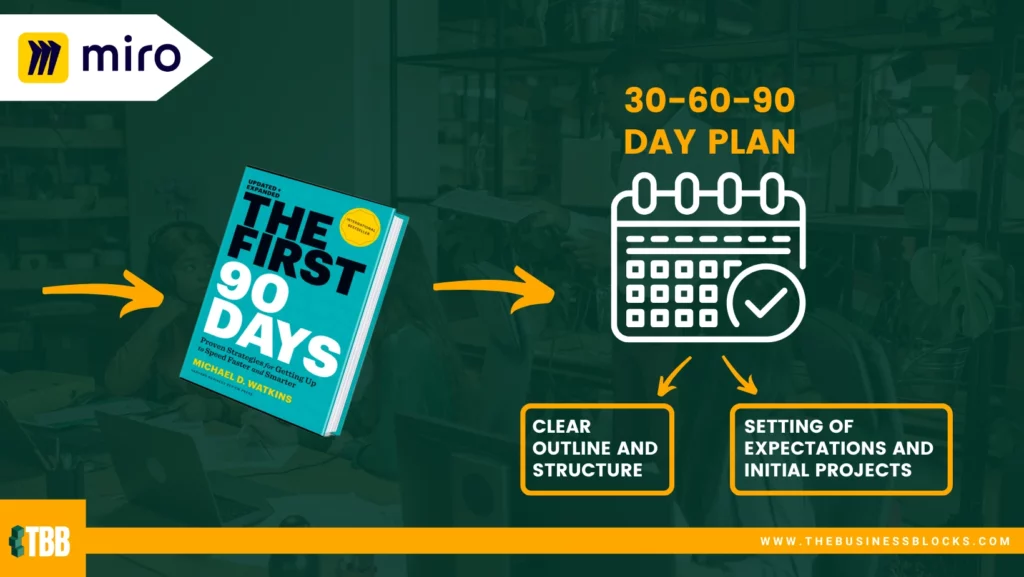
Miro, whose official name is RealtimeBoard Inc., is another SaaS tech company that was founded in 2011 and is based in San Francisco, California and Austin, Texas.
This company strives to promote a collaborative workplace for its own business and for its clients, providing a workplace environment that is flexible, empowering and innovative for its employees. Miro is known for its commitment to pay equality, goal to train, hire and elevate technology workers, focus on career advancement and prioritization for the workforce’s well-being.
Miro is a mid-sized company, with an employee headcount of 1,001 to 5000 employees. Its main product is the platform Miro, an online whiteboard collaboration tool that allows teams from different locations and time zones to work together.
With this software, this company aims to enable globally and geographically distributed teams to collaborate effectively. Miro boasts of 25 million users for its tool, fostering ways to innovate and manage agile development structures.
What started as a workplace collaboration startup has grown into the top 10 most valuable unicorn companies in the U.S. and has recently been able to raise an additional $400 million in funding. Miro is now valued at $17.5 billion and plans to invest more in product development and expand further globally.
It has doubled its employee headcount since 2021 despite the effects of the pandemic, which can probably be attributed to the rise of remote workplace arrangements. What is ironic is despite the fact that its extremely successful whiteboard software is used by a multitude of employees and businesses globally and the company has been continuously scaling up with hubs across Europe, Asia, Australia and North America, the company itself is not remote.
Miro’s onboarding plan is based on Michael Watkin’s bestseller, The First 90 Days. The author is a well-known author of books on leadership and negotiation, and the aforementioned book has been named as one of 100 Leadership and Success Books to Read in a Lifetime by Amazon editors.
This book provides guidance on how to handle changes and transitions into a new role, position or a new job in a new company, including properly diagnosing the situation that a new hire or a leader may find themselves in.
This is what has guided Miro with handling employee onboarding, which spans a quarter of a year or 90 days, setting up employees to become independent and proactive on most of the tasks that are assigned to them. The managers are expected to mentor the new hires and clearly set expectations for them as they adjust into their new positions.
Miro’s 30-60-90 day onboarding plan aims to provide a clear outline and structure for the new hires and their mentors, including setting of expectations and initial projects that they will be involved in.
New employees are tasked to create their initial employee profile, a form of online resume, that properly documents the skills and proficiencies of the new hires.
This is visible for everyone to peruse. This approach does not only serve as a means to introduce the new hires to the team and the rest of the company, but it also manages to establish job clarity, enabling alignment of the expectations for all stakeholders, from the employees to their mentors, team leads and upper management.
What Miro is successful in is ensuring that everyone is aware of the complexity of the operations of the company as well as its growing workforce.
Miro’s strategy, guided by the principles of The First 90 Days, is to help the new employees prepare adeptly for their new jobs, quickly get up to speed in learning what needs to be learned, create a personalized and bespoke strategy in adapting to the new position and properly manage expectations and negotiate success.
Zappos
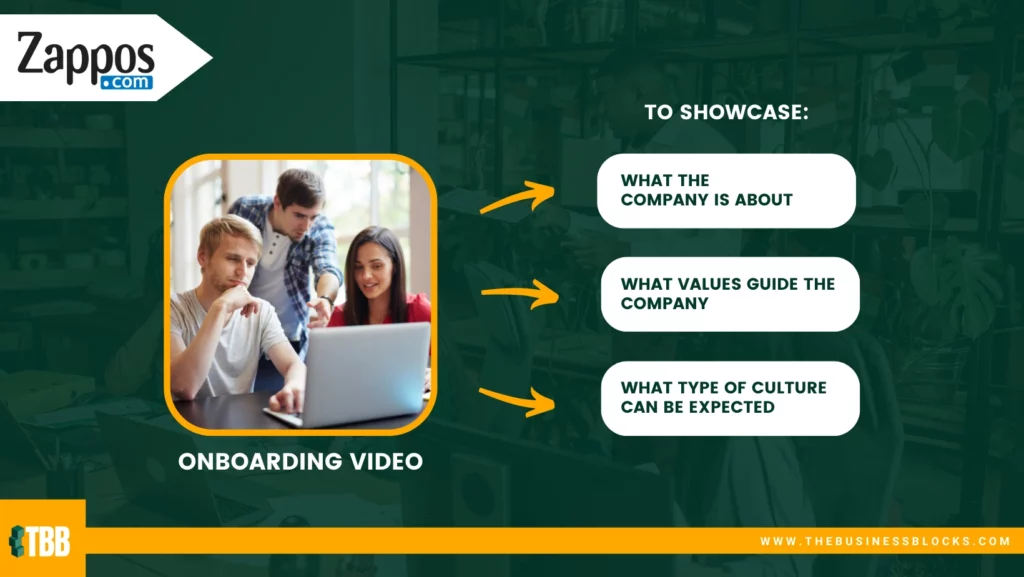
Zappos, an American online shoe and clothing retailer, is based in Las Vegas, Nevada. It was established by Nick Swinmurn in 1999 and started out with the website Shoesite.com.
Zappos was eventually acquired by giant retail company Amazon back in July 2009 for $1.2 billion. It currently has an employee headcount of 1,500+.
Zappos was launched by Swinmurn along with investors Alfred Lin and acclaimed entrepreneur Tony Hsieh who has been renowned for his unorthodox approach and experiments in business structure and management and for being a business management visionary, allowing him to shape a company with a culture that is very unique.
This company is known for its quirky, fun and family-feels work culture; its culture is customer-centric, as stated and guided by the company’s purpose and core values, but also gives equal importance to employee happiness.
This company is known for its prodigious inventory comprised of shoes, handbags and other accessories, and has gained a loyal fanbase because of the exceptional shopping experience that it provides, along with top-notch customer service and company culture, as mentioned above, that is copacetic and inclusive.
This fact proves that Zappos’ above and beyond mission, is not just limited to how it treats customers but as an organization, is a company that strives to ensure that employees are satisfied and engaged. The leaders of this company understands that fulfilled employees are the key to an elevated engagement and profitability, and may lead to a decreased turnover rate.
Zappos’ innovativeness is prevalent not just in its dedication to excellent customer service and employee care, but starts with how it handles employee onboarding. There are two things that sets this company’s onboarding journey apart from the rest of the companies’ strategies.
The first aspect that makes this company’s onboarding experience successful is its onboarding video. This is a 6-minute video that offers a simple yet effective means to showcase what the company is about, what values guide the company, what type of culture can be expected from it and how working in Zappos affects not just one’s professional career but personality development as well.
Each new employee is welcomed to the company with an onboarding video that includes this, which provides a valuable sneak peek into the work culture, workplace environment and the role of each employee to the company, and a guide to each new hire’s roles and responsibilities.
The aforementioned video is, surprisingly, available to the public; for potential and future Zappo employees, this is very beneficial as it may provide a preview of the company’s workplace and culture, allowing the applicants to envision what it will be like to work for the company.
Thus, using this video helps the company achieve two things: turn the onboarding experience for new hires into an awesome experience and attract potential employees.
The second unusual onboarding aspect that is unique to Zappos is what is referred to as “the offer”. New employees, towards the end of their probationary and training period, will be offered to leave the company after a $4,000.00 payout.
This tactic is meant to ensure that each employee that is about to become a regular part of the company’s workforce is committed and passionate about his or her role and may filter out those employees who are not apt for the company’s culture and do not see themselves as employees who will be part of Zappos’ team for the long haul.
Zappos’ methods are eccentric, off-beat and unusual, but are very effective. They could be considered as very on-brand and this is what makes Zappos, especially its onboarding process, a one-of-a-kind venture.
HubSpot
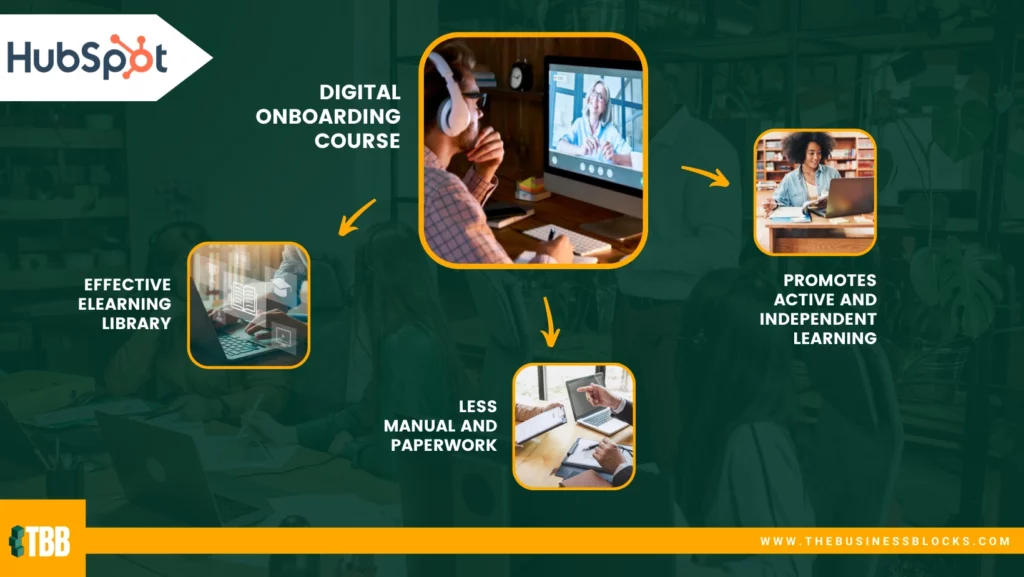
HubSpot is an American software company and is the developer and marketer of software applications for marketing, sales and customer service.
It was founded by Brian Halligan and Dharmesh Shah in June 2006, with its headquarters situated in Cambridge, Massachusetts, U.S. As of 2021, Hubspot’s headcount is at 5,895. It is a publicly listed company in the NYSE and has recorded a revenue of $1.3 billion.
What started as a start-up company that was founded at the Massachusetts Institute of Technology back in 2006 has steadily grown from targeting small companies and start-ups to serving and catering to larger businesses, acquiring businesses such as Oneforty, Kemvi, and The Hustle.
What makes HubSpot different and truly unique is how the company offers a full suite of applications that integrate seamlessly, allowing organizations to configure and build a hub for CRM. Integrating its CMS, for example, with other HubSpot platforms such as its marketing tool, can help its users maximize the full capabilities of the HubSpot platform.
It also offers a full set of features that are excellent for SEO, providing functions and tools that may guide businesses in improving, maintaining and analyzing their homepages and e-commerce websites.
HubSpot’s products and services target customers and organizations that require tools for social media marketing, content management, lead generation, search engine optimization, live chat, customer support services and customer relationship management.
This company’s CRM enables businesses to elevate and enhance their customer support, sales and marketing with easy-to-implement and value-added features such as live chat, meeting scheduling and email tracking.
Its marketing platform offers integration features for Salesforce, SugarCRM, NetSuit and Microsoft Dynamics CRM among others. HubSpot also offers consulting services, provides an online resource academy for sales and marketing and prides itself in being known as a prolific creator of content according to CRMSearch.
HubSpot has been voted as the fourth best place to work in 2021, accorded to the Glassdoor Employees’ Choice Awards. As an organization that constantly endeavors to be knowledgeable with the latest technology in its domain, the company maintains high standards for its employees and a fast-paced workplace environment.
It has a company culture that has been recognized by Glassdoor Inc, Comparably, Great Place to Work and more esteemed workplace culture experts worldwide. This company is very transparent especially when it comes to ensuring that its workplace culture fosters diversity, inclusivity and belongingness.
In terms of employee onboarding, HubSpot has developed its own branded and proprietary onboarding course Foundations, as part of its learning academy. This course contains all the information that new employees would need to learn about the company, about the team and about the roles and responsibilities for their positions.
Implementing a digital onboarding course as part of a very effective elearning library helps organizations in decreasing time-consuming manual and paperwork, promotes active and independent learning and ensures that there is an efficient and conducive way in preparing new hires to be productive and contributing members of the team.
When the COVID-19 pandemic caused disruptions and reduced economic activities worldwide, HubSpot was quick to adapt. The company originally has a huge number of offices around the globe, but all of its operations switched to remote work.
In order to ensure that all employees will still be aligned and could adapt to the redefined workplace, HubSpot developed their remote system and came up with new materials and resources for employees and managers that will help them adjust to the new way of doing things and conducting business.
HubSpot’s solutions and software, although very effective and powerful, could be complex to learn and use. To address this issue, the company produced and developed new and updated content with the goal of providing guides, walkthroughs and tutorials for its applications.
This ensures that the company will have a reusable set of resources that it can use to train new hires and retrain customers and existing employees, and for new employee to be aware of the tools that they will be working on, even for those without prior knowledge of or hands-on experience of HubSpot’s software.
Conclusion
Employee onboarding is a very crucial process for both the new employees and the organizations that are recruiting them; it is a process that sets the tone for the employees’ journey and jumpstarts the relationship between the new recruits, the team members and the organization itself.
It has the power to form the mindset of the new hires, as well as influence their perception of their job, the team and the company. The goal of each and every onboarding process is to welcome the new employees into the fold, engaged and properly equipped with all the things that they would need to be productive team members.
What has been discussed in the sections above are just a few success stories of how companies conduct their onboarding processes. Not two processes are alike, and it is safe to assume that what has worked for one company may not be suited for another.
It is also safe to surmise that these processes are results of what the companies have learned so far; they may be imperfect and there are spots and aspects that still need tweaking.
Just like any effective process, onboarding is a work in progress, a constant process that evolves and changes over time, and these changes are necessary in order to adapt and consider the ever changing times.
We are passionate in helping companies in evaluating and assessing their onboarding practices and policies.
Interested in knowing how well you are doing with your employee onboarding? Take The Business Blocks’ Employee Onboarding Quiz now!

